If you have followed any of my work over the past few years, it will come as no surprise that I am an advocate of planting soybeans early. Ongoing research at Bayer Crop Science sites across the state of Illinois has provided valuable information on the benefits of early planting. Even so, I must admit that with a heavy frost in May and overall slow early development of the soybean crop, I was rather nervous about how the early planted beans would perform. As it turned out, my fears were unfounded. In this article, I will share some of the results from our planting date trials. In 2020, we planted soybeans at six dates beginning with March 7 and ending June 15.
Why can we plant so much earlier than 10 years ago?
Growers have already recognized the value of seed treatments, as indicated by their widespread adoption over the past decade. When planting early, seed treatments are absolutely critical, as they allow the seeds to withstand early pressure from soil-borne insects and diseases. Our March 7, 2020 planting took 52 days to emerge. During the more than seven weeks that the seed sat in cool soil the treatment paid off, protecting the seeds prior to germination. We planted a population of 140,000 and ended up with 90,500 plants per acre in the treated entry, but only 18,700 in the untreated. Figure 1 shows a comparison of the percentage of seeds that survived by planting date over the past two years.
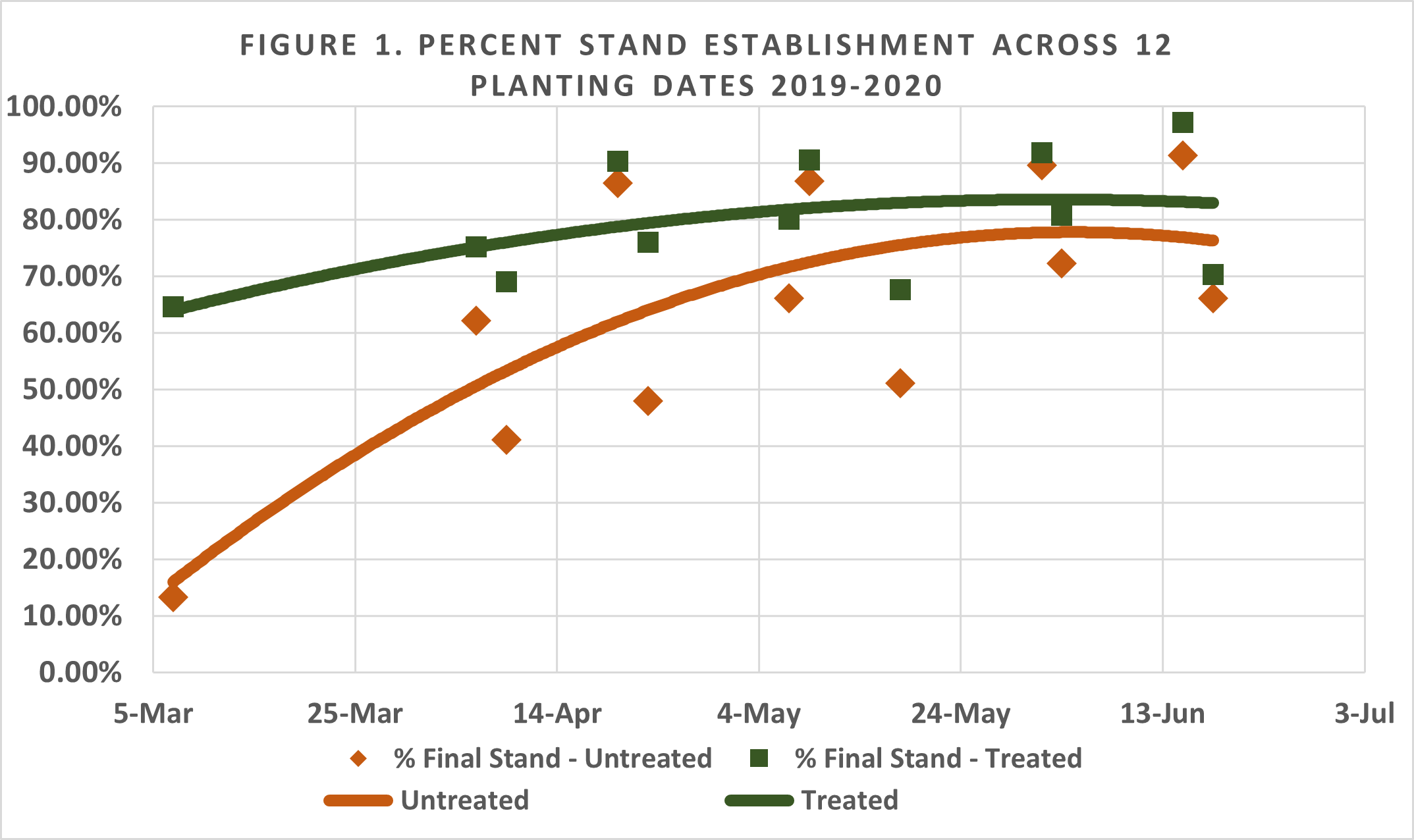
What if it frosts?
When a heavy frost hit the state overnight on May 8, plants from our first three planting dates had already emerged (Figure 2). Due to the plants being at different growth stages, they were affected differently, but the worst damage occurred in those planted April 8, with just over 4% of the seedlings killed at the VC growth stage. In most of the survivors, damage to the growing point led to increased branching (Figure 3). The overall low levels of plant mortality help to illustrate the resilience of soybeans, and can provide some level of comfort to growers who are new to the early planting game.
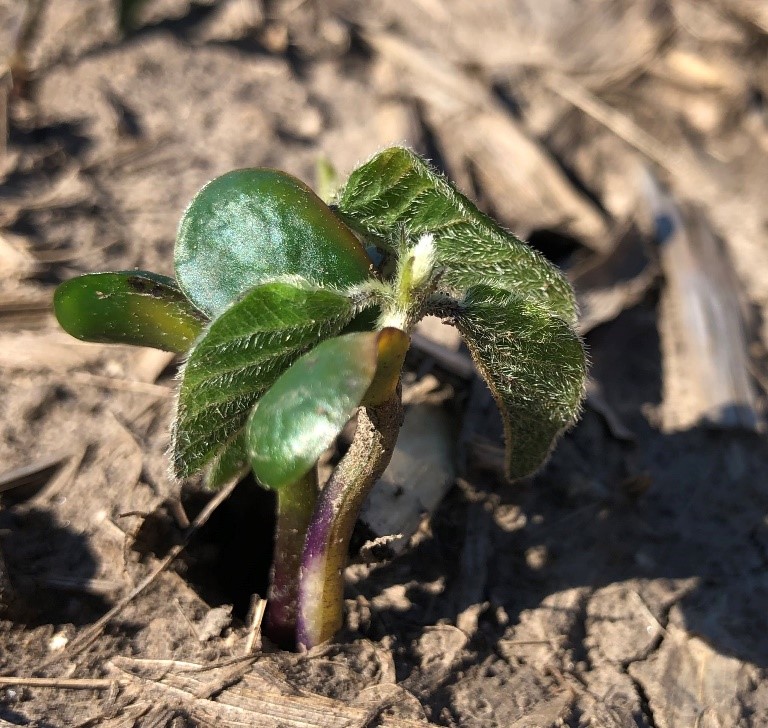
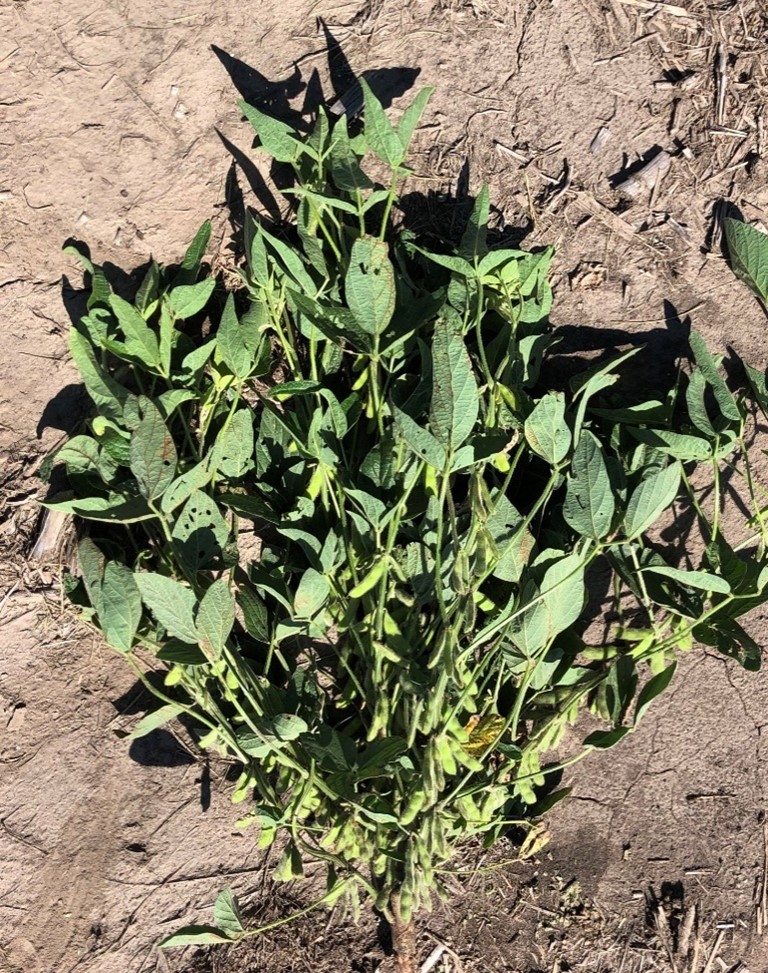
Why does planting early provide increased yield potential?
The biggest advantage to planting soybeans early is the opportunity for the plant to create nodes before flowering begins. There are many factors that impact yield, but the foundation for yield potential begins with node creation. Over the past couple of years, we have counted the number of nodes on July 10 (roughly two weeks after the average onset of flowering in our experiments). As you could logically expect, there is a much greater opportunity to create additional nodes when planting earlier (Figure 4).
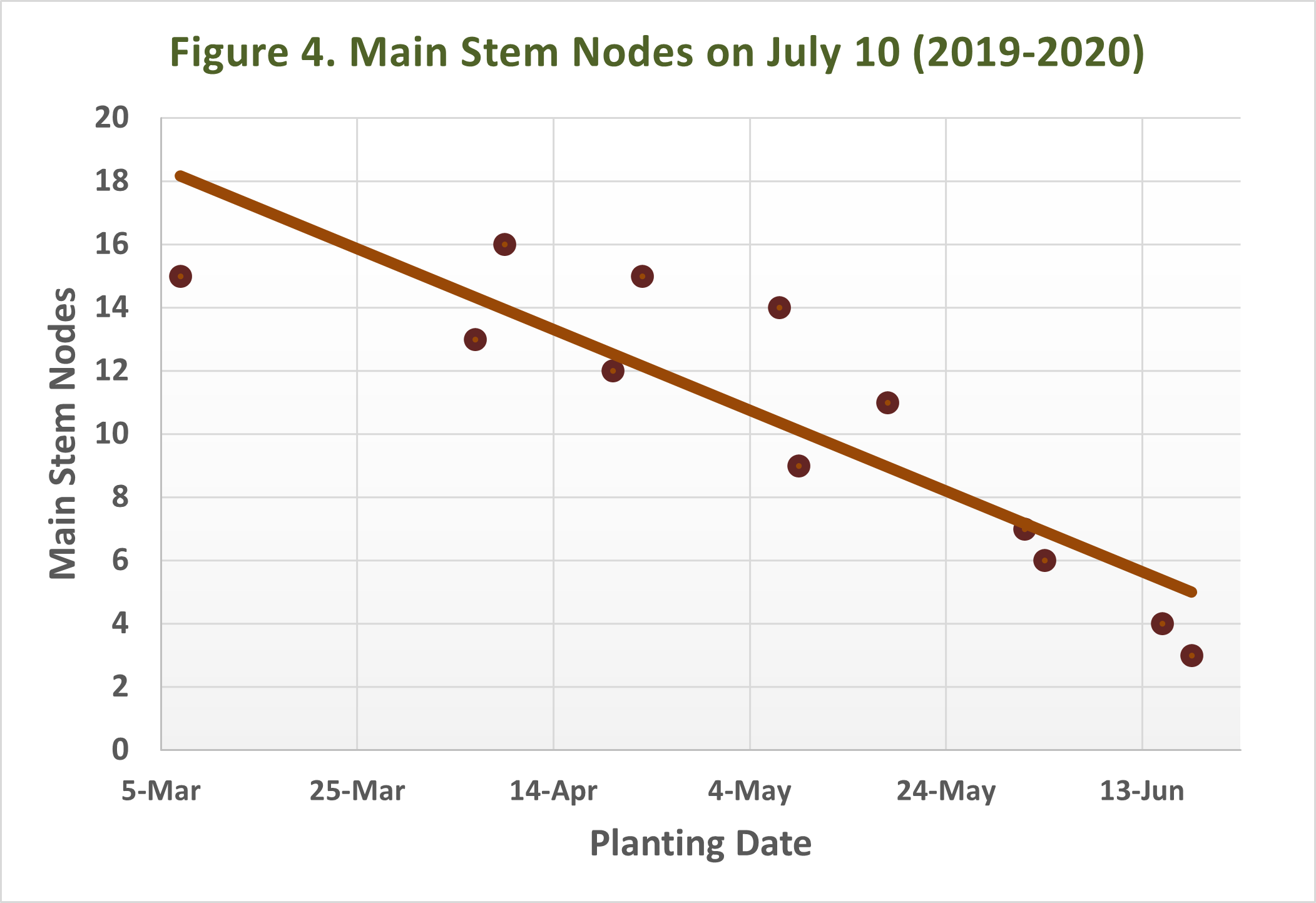
So what about yield?
Contrary to my expectations, in 2020 our highest yielding planting date was March 7. Yield levels overall at our site were a bit disappointing; the earliest planting topped out at just over 60 bushels/acre (Figure 5). This graph also highlights the importance of quality seed treatments, especially in early planting. One thing you may notice is that the yield level was fairly consistent up until the June plantings. We also witnessed this phenomenon in 2019, and I attribute it mostly to extremely stressful growing conditions throughout May in many locations over the past 2 years.
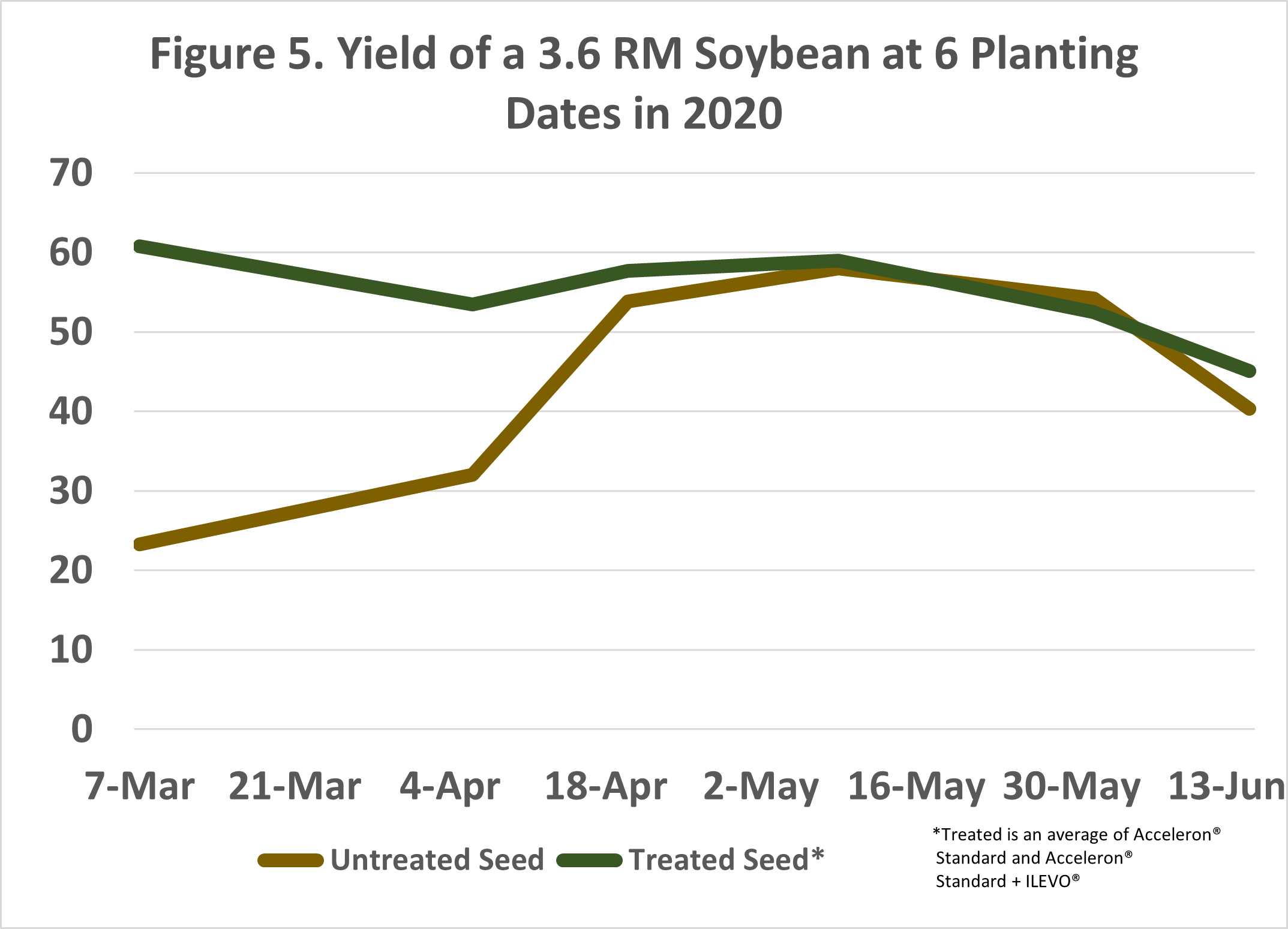
It is important to realize that although there may not be a huge yield advantage to early planting in every season, there is rarely a yield penalty (Figure 6). The data in this graph are compiled from 4 research sites in central and northern Illinois over the past 3 growing seasons.
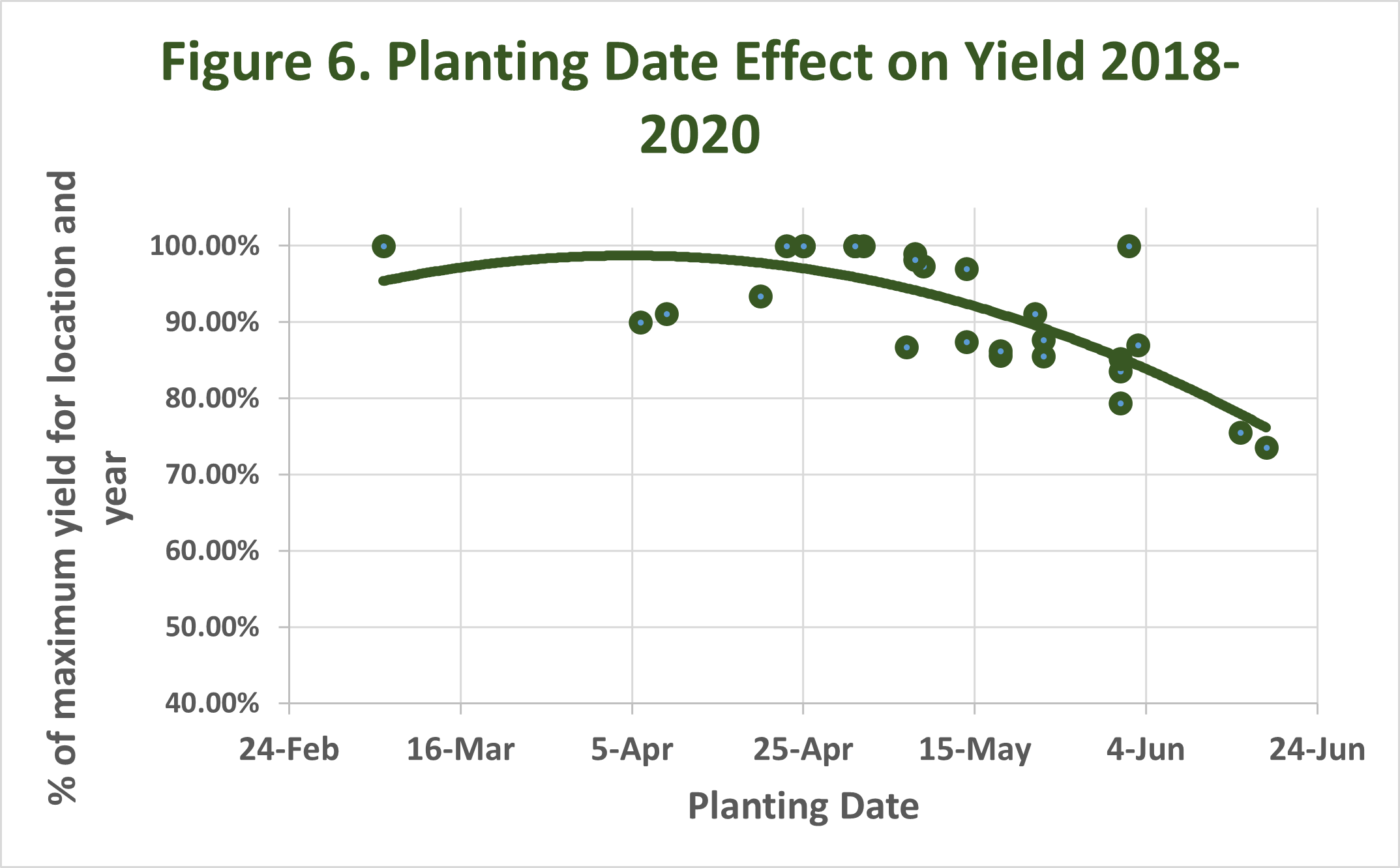
What about corn?
The best thing about planting soybeans early is that they can be planted into conditions that are unfavorable for corn planting. This allows growers to get a jump on planting without placing corn seeds into an environment that puts them at a risk for poor performance. In 2020, we planted corn at each date on which we planted beans, with the exception of March 7 (Even I’m not that crazy). Figure 7 drives home the point that soybeans have a much wider window in which they can be planted with reasonable expectation of satisfactory yield.
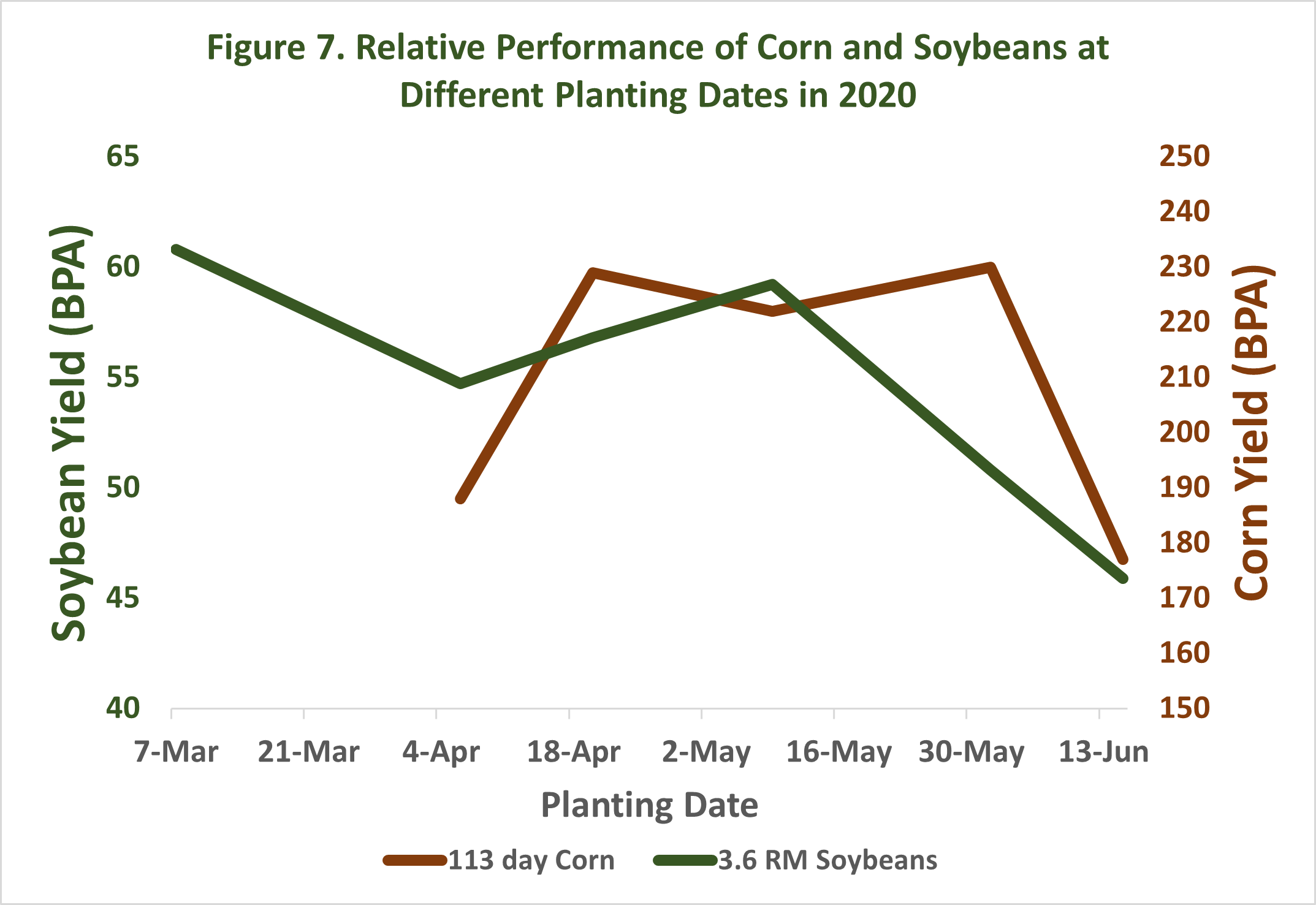
The great thing about conducting agronomic research for a living is that we can do things that the average farmer would consider crazy, just to see what happens—like planting soybeans at the beginning of March. Although I would be hesitant to encourage growers to follow my example, we can learn a lot from seeing how the crop handles the conditions and be prepared to provide confident recommendations for the future. Based on what we have seen over the past few years, it seems that planting at least a few fields of your soybeans early is a no-brainer.






 and then
and then